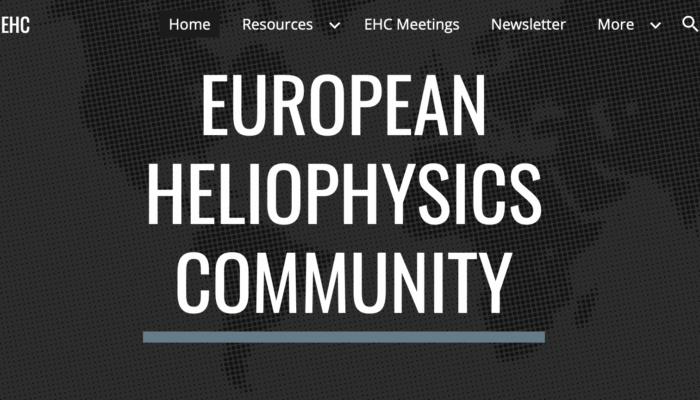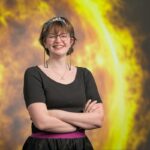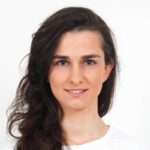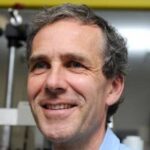
“Heliophysics studies the Sun, its sphere of influence, and how it affects the bodies in the solar system.” – this holistic approach to understanding our space environment is at the heart of the European Heliophysics Community (EHC), an open and inclusive network of researchers across Europe (https://www.heliophysics.eu/). The EHC promotes collaborative, curiosity-driven science that explores the plasma processes shaping our heliosphere, planetary magnetospheres, and ionospheres. But what does heliophysics mean to the people driving this science forward, and why is a European heliophysics community essential? To find out, we are publishing a special interview. We have asked ten scientists from different career stages and backgrounds across the EHC the same question, and their answers reveal the diversity, passion, and ambition behind Europe’s heliophysics efforts.
What does heliophysics mean to the people driving this science forward, and why is a European heliophysics community essential?
Dr. Charlotte Götz
studies the magnetospheres of unmagnetized bodies in the solar system with emphasis on the cometary plasma environment (based in the United Kingdom). |
Prof. Dr. Daniel Verscharen
focuses on plasma physics and solar wind processes, using plasma theory and spacecraft data to explore key questions in heliophysics (based in the United Kingdom). |
Dr. Heli Hietala
studies fundamental plasma phenomena across the Solar System, emphasizing collaboration across diverse heliophysics disciplines (based in the United Kingdom). |
|---|---|---|
Prof. Dr. Jonathan Rae
focuses on the Earth’s radiation belts, the complex interactions of plasma and waves in space, and the impacts of geomagnetic storms (based in the United Kingdom). |
Dr. Lina Hadid
specializes in space plasma physics, with a focus on the solar wind and comparative planetary magnetospheres and related processes (based in France). |
Prof. Dr. Manuela Temmer
studies solar and heliospheric physics, with a focus on coronal mass ejections, solar flares, and their space weather impacts (based in Austria). |
Dr. Matt Taylor
serves as heliophysics project scientist at ESA, coordinating cross-directorate initiatives and interdisciplinary communications (based in the Netherlands). |
Dr. Nicolina Chrysaphi
a solar physicist focused on solar radio bursts, radio-wave propagation, data–simulation comparisons, and SEP measurements (based in Italy). |
Dr. Rumi Nakamura
space plasma physicist focused on magnetospheric dynamics, energy transport, and coupling between the solar wind and Earth’s magnetosphere (based in Austria). |
Prof. Dr. Thierry Dudok de Wit
a solar-terrestrial physicist keen on statistical techniques for understanding solar variability and its impact on the Earth’s environment (based in Switzerland). |
||
Ten Voices. Ten distinct journeys through the heliosphere. Each offers a reflection on what heliophysics means and why this community matters. Together, their insights paint an explicit picture of a vibrant and collaborative scientific journey that connects curiosity, discovery, and a shared commitment to understanding our space environment.
Charlotte: “I am part of a small but active community that thrives by being embedded within the broader heliophysics field, enabling valuable cross-disciplinary science. We aim to support early-career researchers in pursuing long-term careers in science and science-enabling technology within their field. A key priority for the heliophysics community is to identify opportunities and establish a network that supports one another. I believe this allows us to provide a clear interface to the European Space Agency (ESA) and national funding bodies, effectively representing our shared interests.”
A key priority for the heliophysics community is to identify opportunities and establish a network that supports one another.
Daniel: “Heliophysics is an exciting interdisciplinary research field, rich with fascinating open science questions. Our solar system serves as a vast natural laboratory that we can directly access, explore, and observe through our spacecraft. The EHC provides a unique platform to discuss and define the most pressing scientific challenges in heliophysics, to develop innovative space missions and novel approaches to tackle these questions, and to inspire and engage the next generation of scientists in these endeavours.”
Heli: “For me, heliophysics is the study of fundamental phenomena and their effects, both in our immediate environment and across the Solar System and beyond. Its broad scope means that my work is not only relevant to many people but also depends on close interaction with diverse and inspiring colleagues to drive the most exciting progress. Heliophysics is both a science of connections and a science that connects. The EHC embodies this spirit by bringing people together across specialties, career stages, and geographical boundaries.”
Heliophysics is both a science of connections and a science that connects.
Jonathan: “Great question, or set of two questions, really. I think that heliophysics means that, for the first time, there is a significant push to work together across the artificial constraints of our specific discipline. I am a space plasma physicist who seeks to understand the Sun-Earth interaction. However, I have found colleagues in Solar, solar wind, planetary, and cometary environments to be extremely supportive, open, enthusiastic, and collaborative across both my own and other disciplines. This is a phenomenal thing to see, even in such a short time, and I can only expect this to get better and better as we talk more and broaden our community. It is such a vital endeavour.
Why is it important? Space science is a cross-disciplinary, cross-field endeavour that seeks to understand systems that are, by definition, coupled together in some way. Even at the closest and farthest reaches of the solar system, a spacecraft is traversing that coupled region. We are all interested in plasma of one sort or another, and we can all benefit from learning each other’s techniques and perspectives. By engaging as a vibrant, connected community, we enrich our understanding and strengthen our research.”
By engaging as a vibrant, connected community, we enrich our understanding and strengthen our research.
Lina: “Heliophysics is not limited to the study of the sun but extends to all space environments within our heliosphere. It is truly exciting to witness the establishment of an official EHC platform in Europe, bringing together scientists from across our community. This initiative creates a unique opportunity for students, early-career scientists, senior researchers, and engineers from diverse disciplines to connect, exchange ideas, and collaborate. Through this platform, we can learn from each other and engage in discussions that range from fundamental universal physical processes to instrument development and the design of future space missions.”
Manuela: “EHC brings together researchers from across all heliophysics disciplines to foster cross-disciplinary collaboration and drive innovative science. By uniting experts with shared interests – from solar physics, space plasma physics, to ionosphere-thermosphere physics, magnetospheric physics, planetary physics, small body physics, and the fundamental and applied research on space weather – EHC aims to spark discoveries at the intersections of these fields. Supporting early career scientists is at the heart of everything EHC does. By building a strong, connected European network, we aim to provide young researchers with access to training, facilitate mobility opportunities, and offer attractive career pathways. EHC is also committed to transparency and inclusivity, creating open opportunities for scientists to get involved in future space missions and ground-based observatory networks.”
Matt: “Heliophysics, to me, means a broad, diverse, and multifaceted discipline, with a core that is space plasma physics and its impact. Europe has a very strong history in heliophysics, but due to existing structures in various professional bodies, agencies and national organisations, this discipline can be split up and fragmented. This can lead to loss of communication and also isolation, in particular for early career researchers. EHC effort then imposes an umbrella under which all can identify as being in the same discipline and engage in diverse and cross-cutting science purely by improved discoverability. With a small investment in time and effort, a low-overhead EHC organisation can support early career researchers (ECRs), ensure better communication (e.g., to address funding and mission calls) and target better outreach of the discipline, the sum of the parts being much bigger than the whole. Say it loud and proud! I am a heliophysicist!”
Say it loud and proud! I am a heliophysicist!
Nicolina: “Reflecting on what heliophysics means to me, I have come to see it as a source of excitement. The realisation that we still don’t fully understand the intricacies of how our closest star functions—or how it influences its surroundings—even in cases where phenomena have been observed for decades or centuries, evokes a sense of awe. As we continue to study the Sun and the heliosphere, and as our instruments capture finer details, we discover just how complex and dynamic this system truly is. Heliophysics is a great example of the importance of collaboration among individuals with diverse skill sets. A large range of expertise is required (from theoretical modelling to instrumentation) to truly understand the chain of events and mechanisms behind a solar eruption and its various impacts. A strong, united European heliophysics community is essential for sharing progress across domains, identifying areas of overlap (such as physical mechanisms, analysis techniques, or instrument capabilities), and enabling the kind of interdisciplinary studies that can unravel the underlying physical phenomena. It also plays a vital role in defining and advocating for our community’s shared priorities and long-term vision.”
Heliophysics is a great example of the importance of collaboration among individuals with diverse skill sets.
Rumi: “Heliophysics encompasses the study of space plasma physics within the solar system, including its interactions with planetary surfaces and neutral gases. In my work as a heliophysicist — often involving complex, long-duration space science missions — I have come to value the crucial role of international and cross-generational collaboration in advancing space plasma observations across diverse environments. I believe EHC is essential for fostering effective research partnerships across the broad disciplines of heliophysics, which span both observational and theoretical studies of the fundamental physics of space plasma, planetary science, and the applied science of space weather.”
… the crucial role of international and cross-generational collaboration …
Thierry: “When people ask about my field of research, I always struggle to find the right words to describe it. My work covers solar irradiance variability, solar wind turbulence, and terrestrial impacts, including space weather and space climate. Saying that I work in heliophysics has finally helped me resolve this frustrating dilemma. This common umbrella makes a lot of sense to me because it connects me to a wide community of scientists who study the same processes but focus on other regions or parts of the systemic chain.”














